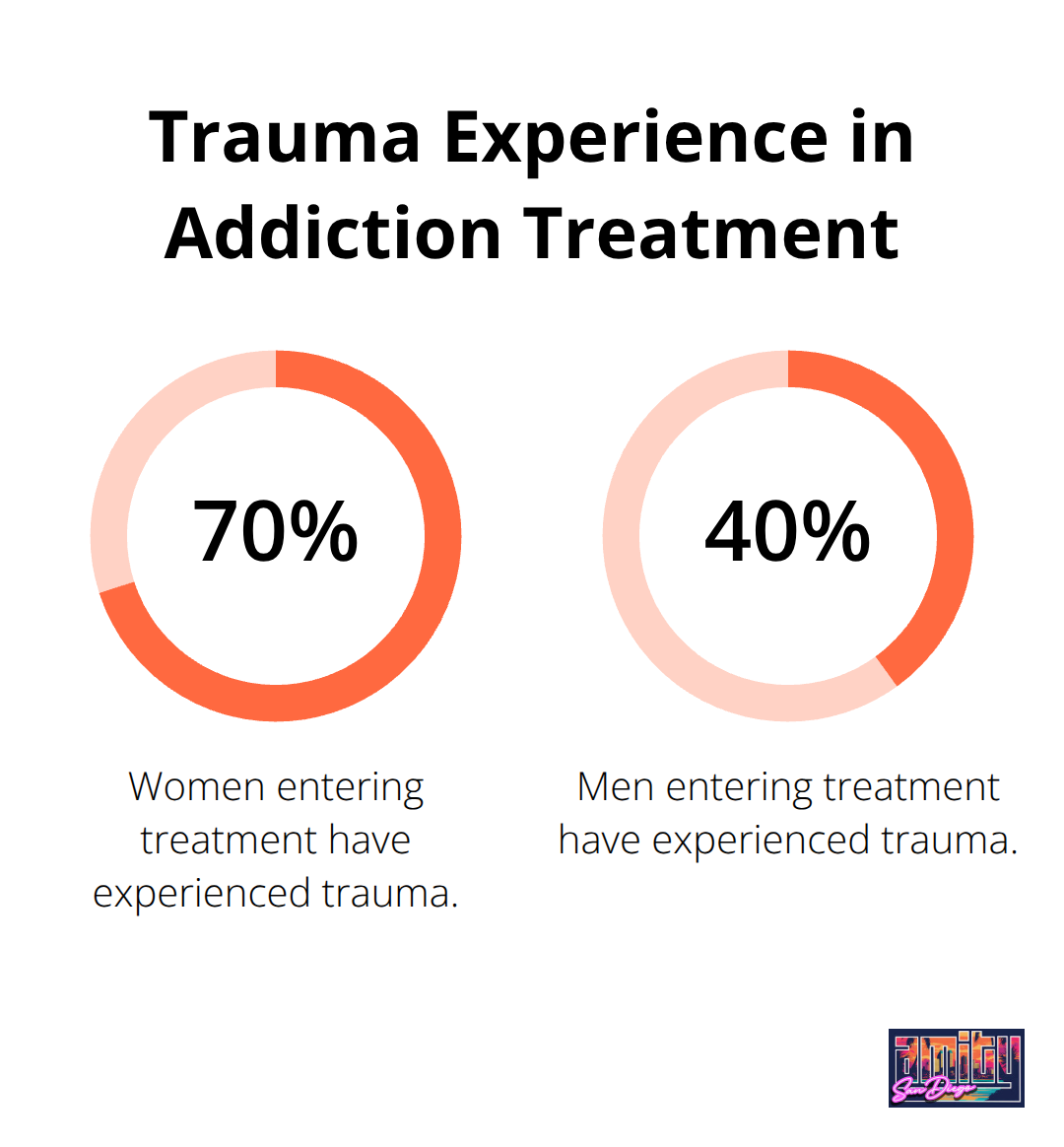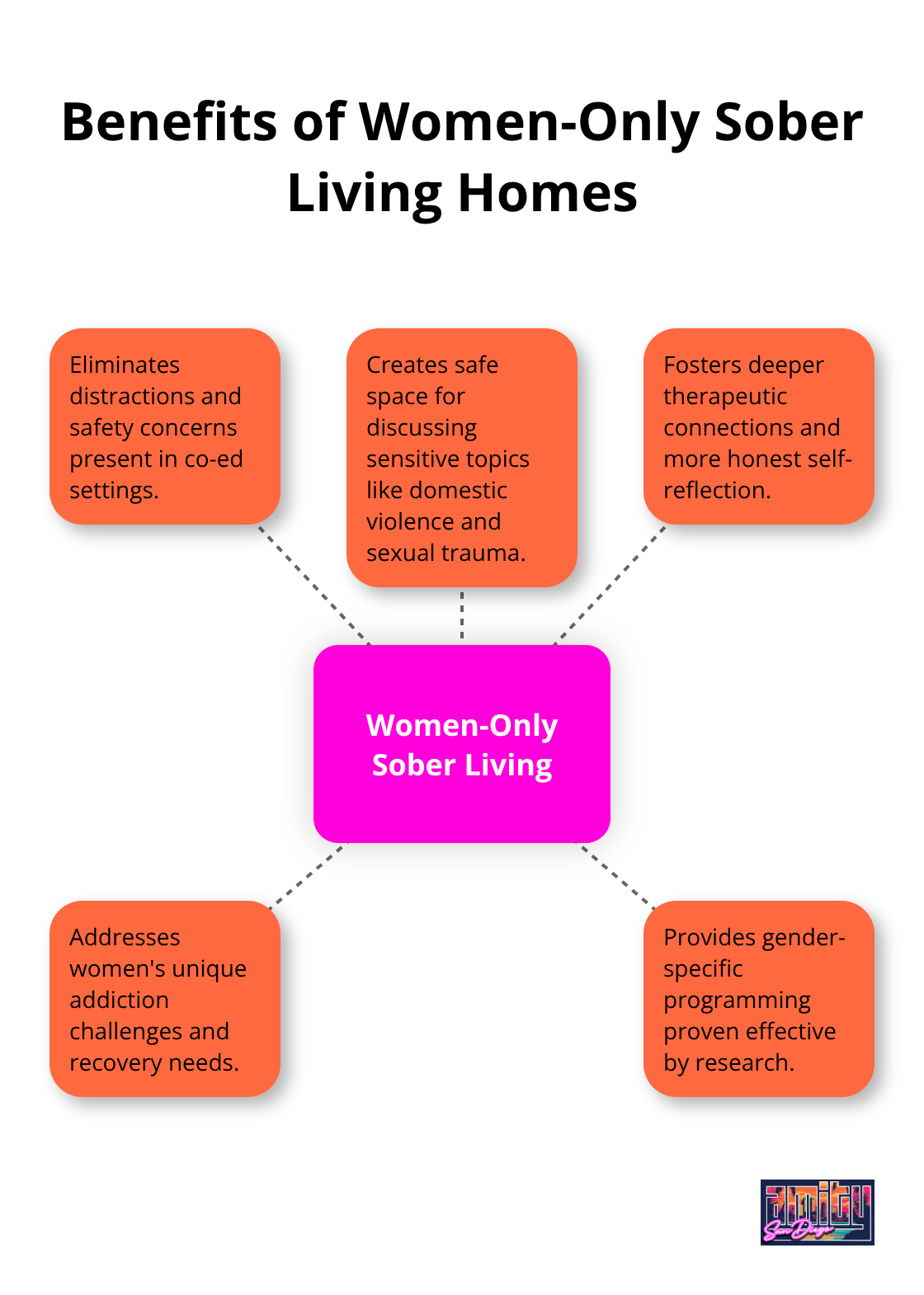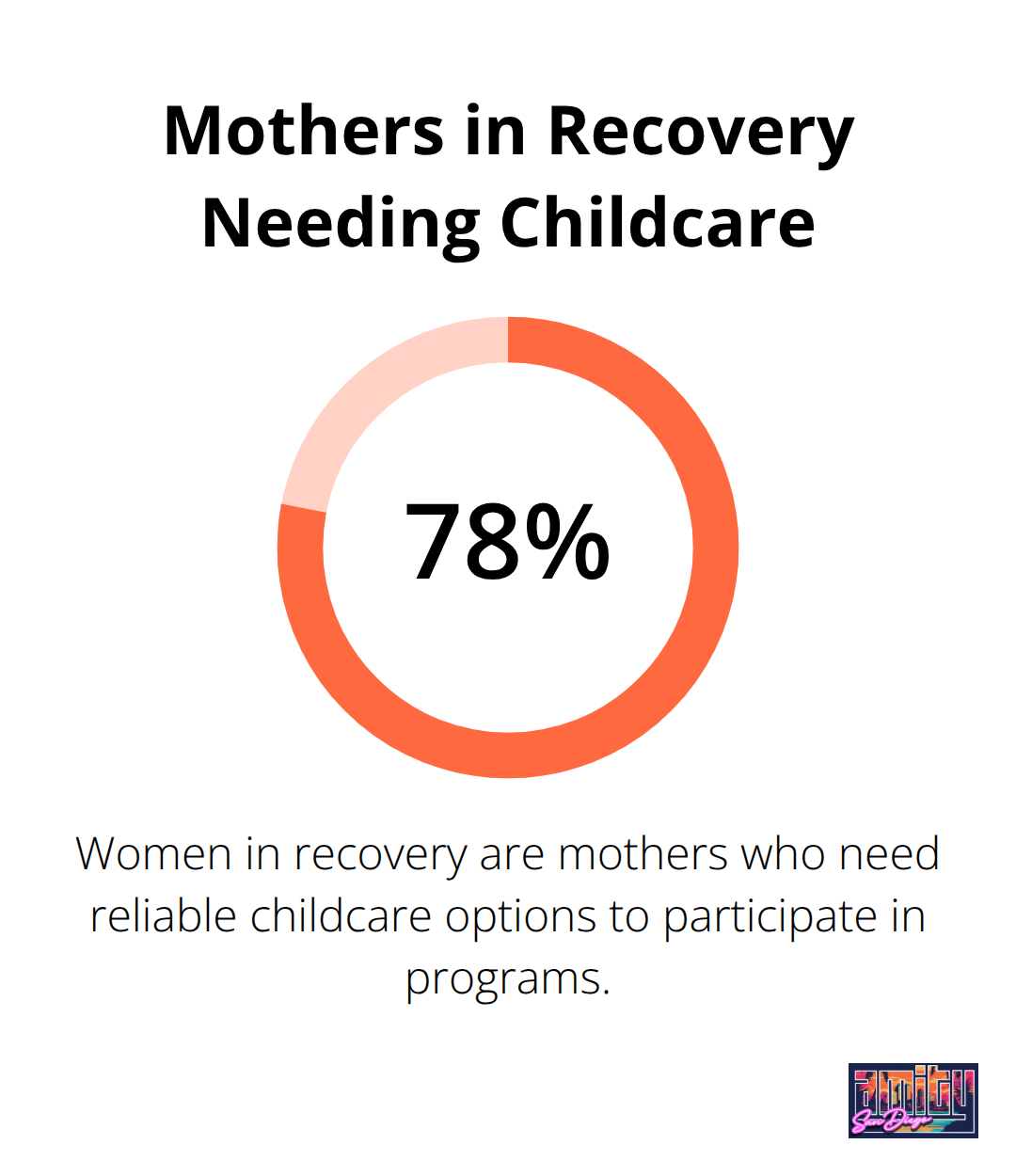Women face distinct challenges during addiction recovery that require specialized support systems. Research shows that 70% of women entering treatment have experienced trauma, compared to 40% of men.
At Amity San Diego, we recognize that effective sober living for women addresses these unique needs through gender-specific programming. The right environment can make the difference between relapse and lasting recovery.

What Makes Women’s Recovery Different
Women enter addiction treatment with burdens that men rarely face. The National Institute on Drug Abuse reports that women develop substance use disorders from prescription drugs at twice the rate of men, and 59% of women in treatment programs have experienced domestic violence. These statistics reveal a harsh reality: women’s addiction often stems from attempts to cope with trauma, abuse, and overwhelming responsibilities.
The Trauma Connection
Women’s brains respond differently to stress and trauma, which makes them more vulnerable to certain addiction patterns. Studies from the Substance Abuse and Mental Health Services Administration show that women with PTSD develop alcohol dependency at higher rates than men. Women also metabolize alcohol differently, reach higher blood alcohol levels faster, and suffer organ damage sooner. These biological differences mean that women need specialized treatment approaches that address both the physical and psychological aspects of addiction. Standard treatment programs (designed primarily for men) often miss these critical factors.
Family Responsibilities Create Unique Barriers
The reality is stark: many women in recovery are mothers, and many fear they will lose custody of their children if they seek treatment. Women carry disproportionate caregiving responsibilities for children, elderly parents, and partners, which makes it nearly impossible to commit to traditional residential programs. The American Journal of Public Health found that women who participate in programs that allow children to stay with them have 50% higher success rates. This data proves that effective women’s recovery programs must integrate family support services (not treat them as an afterthought).
Financial and Social Pressures
Women face unique economic challenges that complicate their recovery journey. The wage gap means women have less financial flexibility to take time off work for treatment, and many lack adequate insurance coverage for comprehensive care. Social stigma hits women harder than men, particularly mothers who struggle with addiction. These pressures create additional barriers that specialized women’s programs must address through flexible scheduling and comprehensive support systems.
What Sober Living Options Work Best for Women
Women-only sober living homes represent the gold standard for female recovery environments. These facilities eliminate distractions and safety concerns that arise in co-ed settings, which allows women to focus entirely on their healing process. Research has established clear differences between women and men in substance use and substance-abuse-related problems, supporting the effectiveness of gender-specific programs.
Women-only homes create space for discussion of sensitive topics like domestic violence, sexual trauma, and reproductive health without fear of judgment or concern about male residents’ reactions. This environment fosters deeper therapeutic connections and more honest self-reflection.

Structured Programs Address Complex Needs
The most effective women’s sober living programs integrate multiple support levels within a single framework. These structured environments combine housing with intensive outpatient programming, individual therapy, and group counseling sessions. Recovery housing provides long-term recovery-oriented living environments that offer housing stability for those in recovery.
These comprehensive programs address the interconnected nature of women’s addiction challenges. They provide clinical intensity while maintaining flexibility for mothers and working women (who often cannot commit to traditional residential treatment schedules).
Transitional Housing Bridges Treatment Gaps
Transitional housing with integrated treatment services fills a critical gap between intensive treatment and independent living. These programs typically last 6-12 months and combine affordable housing with ongoing clinical support, job training, and childcare assistance.
Recovery statistics show that 2 in 3 adults who ever had a mental health problem and 7 in 10 adults who ever had a substance use problem benefit from comprehensive support services. The key difference lies in continued access to trauma-informed care, parenting support, and financial planning services that address the root causes of women’s addiction patterns.
Safety Features That Matter Most
Women’s sober living facilities prioritize physical and emotional safety through specific design elements and policies. These homes implement strict visitor policies, secure entry systems, and 24-hour staff supervision (particularly important for women with histories of domestic violence or stalking).
The emotional safety component proves equally important. Staff members receive specialized training in trauma-informed care, and house rules reflect understanding of women’s unique triggers and vulnerabilities. This comprehensive safety approach creates the foundation that women need to focus on recovery work without constant vigilance about their physical or emotional well-being.
For those seeking comprehensive support, consider exploring addiction treatment San Diego options that prioritize women’s unique recovery needs.
What Features Make Women’s Sober Living Programs Actually Work
Effective women’s sober living programs operate on three non-negotiable foundations that separate successful facilities from those that fail their residents. The National Association of Recovery Residences works to enhance access to quality recovery residences by setting standards, providing education, and advocating for those in addiction recovery. These programs recognize that women’s recovery requires trauma treatment, family relationship rebuilding, and economic independence development simultaneously.
Security Measures That Address Real Threats
Women’s sober living facilities must implement security protocols that acknowledge the reality of domestic violence and stalking. Effective programs require 24-hour staffing, controlled access systems, and strict visitor policies that protect residents from abusive partners or family members. Research shows that men are significantly more likely than women to have drug abuse and dependence issues, highlighting different risk factors between genders.
Smart facilities also provide trauma-informed staff training, private therapy spaces, and emergency safety plans for each resident. These measures create the psychological safety women need to engage in recovery work without constant hypervigilance.
Skills Training That Builds Economic Independence
The most successful programs integrate vocational training, financial literacy, and parenting education into daily programming. Studies demonstrate that vocational counseling services have been highly efficacious in resulting in part-time and full-time jobs for participants. Effective facilities partner with local employers, offer computer training, and provide resume writing workshops that address employment gaps caused by addiction.
Childcare support during training sessions proves essential, as 78% of women in recovery are mothers who cannot participate without reliable childcare options.

Family Reunification Services That Work
Programs that allow children to stay with mothers during recovery report 50% higher success rates than those that separate families. Effective facilities provide on-site childcare, parenting classes, and family therapy sessions that help women rebuild damaged relationships while maintaining sobriety.
These services address the reality that many women fear losing custody if they seek treatment. Quality programs work with child protective services and family courts to support mothers through the legal process while they focus on recovery. For comprehensive addiction treatment San Diego resources, specialized programs continue expanding to meet growing demand.
Final Thoughts
Women’s recovery demands specialized environments that address trauma, family responsibilities, and unique biological factors that standard programs often overlook. The evidence shows clear results: sober living for women works best when facilities provide gender-specific programs, comprehensive safety measures, and integrated support services that treat the whole person. These programs combine trauma-informed care with practical life skills training, childcare support, and family reunification services.
Effective women’s programs create the foundation for lasting recovery when they address the root causes of women’s addiction patterns rather than just the symptoms. Quality treatment centers recognize that women face different challenges than men during recovery (including higher rates of trauma and caregiving responsibilities). The right support systems make recovery possible for everyone who commits to the process.
We at Amity San Diego understand that recovery requires personalized care that fits into women’s complex lives. Our programs provide the clinical excellence and flexible scheduling that women need to heal body, mind, and spirit. The path to recovery starts with finding the right addiction treatment San Diego program that recognizes your unique needs as a woman.

